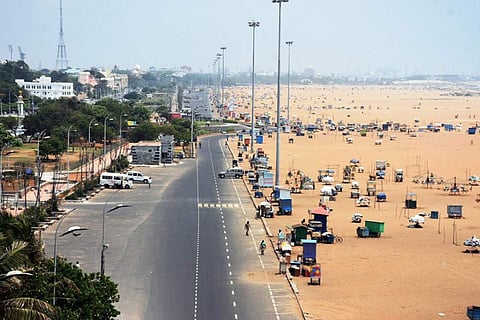

An analysis of air quality data pre- and post-Deepavali across five major cities of India indicates that Chennai remained the least polluted city post Deepavali, with average AQI (Air Quality Index) levels lower than 50 and PM2.5 levels hovering around 15. Chennai experienced unusually high precipitation during Deepavali, which largely resulted in the improvement in air quality in the region, according to a study conducted by Ambee, a company that provides hyperlocal data on environmental factors in real-time across the globe. The sudden downpour, which is also known as a mesoscale phenomenon, ranged from 150-200 mm causing a decrease in AQI this Deepavali. A lower AQI suggests better air quality.
The study found that between November 1 to November 7, among the 10 most polluted areas in Chennai were Kilpauk, Anna Nagar, Aminjikarai, Aynavaram with average AQI levels at 75 and average PM2.5 levels just above 25. Chennai also recorded the cleanest areas among all cities with some areas like Adyar and Besant Nagar recording average PM2.5 as low as 10. Areas like Velacheri recorded average AQI just above 25. Other least polluted areas were Gopalapuram, Teynampet west, TTTI Taramani and Mambalam with average AQI just above 30, as per the study.
According to Tamil Nadu Pollution Control Board (PCB) data, the AQI in Chennai beginning on Deepavali day (Thursday, November 4) and ending the following morning was found to be very poor, ranging between 342 to 385.
Bengaluru recorded similar patterns with average AQI just above 50 and a PM2.5 level of around 20, as per the study. Mumbai, on the other hand, recorded an average AQI of around 150 throughout the period. Hyderabad saw a marginal drop in pollution levels post Deepavali from average AQI 110 prior to Deepavali to below 100 post Deepavali with PM2.5 levels at 25 post Deepavali, the study said.
Among the most polluted areas in Bengaluru were Vijayanagar East, Hampinagar, Chandra Layout with average AQI above 100 and average PM2.5 above 40. Tavarekere, Bengaluru Vishwavidyala, and Nayandanahalli were among the other most polluted areas. On the other hand, Jalahalli West, Dasanapura, Laggere were among the least polluted areas with average AQI just above 40 and average PM2.5 levels as low as 10 in the above mentioned areas, the study noted.
In Hyderabad, among the 10 most polluted areas were Kishanbagh, Tadbun, Golconda, and Shantinagar with average AQI touching 140 and average PM2.5 above 50. The least polluted areas were Chandanagar, Cyberabad, Mallampet, Nutankal with average AQI ranging between 60 and 80 and average PM2.5 ranging between 20 and 30.
Delhi recorded the highest levels of pollution, with an average AQI above 160 prior to Deepavali and around 250 post Deepavali. The PM2.5 levels in Delhi saw a jump from 100 to 175 post Deepavali.
Commenting on the analysis, Madhusudan Anand, Co-Founder, and CTO, Ambee said, “Our five-city analysis suggests that the overall air quality has seen a marginal improvement in most cities during this Diwali. For instance, Chennai experienced unusually high precipitation during Diwali, which largely improved the air quality in the region. Delhi saw a marginal improvement in its air quality level this year as compared to 2020.”